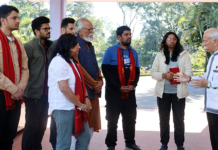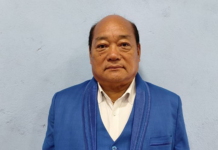Khandu, Tayeng, Kamin top list of wealthy
Staff Reporter
ITANAGAR, 10 Apr: Chief Minister Pema Khandu, Mebo MLA Lombo Tayeng, and Nationalist Congress Party (NCP) candidate Nikh Kamin are the top three wealthiest candidates in the 2024 assembly elections, while Arunachal Democratic Party (ADP) candidate for Bordumsa-Diyun, Madan Tanti, NCP candidates for Changlang, Dihom Kitnya, and NCP candidate for Mechukha, Aju Chije, are the poorest candidates.
The Association for Democratic Reforms (ADR) on Wednesday released details on the candidates’ assets and criminal records. The ADR has analysed the self-sworn affidavits of 142 out of 143 candidates who are contesting in the assembly elections in the state.
Out of 142 candidates analysed, 98 are from national parties, 27 are from state parties, four are from registered unrecognised parties and 13 candidates are contesting independently, the ADR said.
Khandu, who has been elected unopposed from Mukto assembly constituency on a BJP ticket, “disclosed a total assets value of Rs 332 crore, while Tayeng revealed Rs 171 crore, and Kamin has Rs 153 assets value,” it said.
Madan Tanti is the poorest candidate with an asset value of Rs 40,000, while Dihom Kitnya has Rs 4 lakhs, and Aju Chije declared assets value of Rs 5,99,249.
The ADR revealed that 81 percent of the candidates are crorepatis, which means that, out of 143 candidates, 115 candidates are crorepatis.
The ADR also added that “Khandu, Namsai MLA Zingnu Namchoom, Deputy Chief Minister Chowna Mein, and Tezu MLA Karikho Kri are among the top four re-contesting MLAs with highest asset increase.”
“Khandu’s asset values increased 103 percent from Rs 163 crore in 2019 to Rs 332 crore in 2024, while Namchoom’s assets, with Rs 27 crore in 2019, increased to Rs 68 crore (145 percent). Mein’s asset value of Rs 64 crore in 2019 has increased to Rs 126 crore in 2024, (95 percent), and Kri’s assets increased by 121 percent from Rs 18 crore in 2019 to Rs 41 crore in 2024,” the ADR said.
“Among the crorepatis, Khandu has liabilities of Rs 180 crore, followed by NCP candidate from Dirang (W/Kameng) Yeshi Tsewang with Rs 44 crore liabilities, and BJP candidate contesting for Chayang Tajo, Hayeng Mangfi with Rs 17 crore liabilities,” the ADR disclosed.
The ADR further added that, “among the top three candidates who declared high income as per the income tax return filings are BJP candidate and Namsai MLA Zingnu Namchoom, Lumla MLA Tsering Lhamu, and DCM Chowna Mein.”
Mein has a total asset value of Rs 126 crore, while Lhamu has Rs 81 crore, and Namchoom has a total asset value of Rs 68 crore.
“Among the wealthy candidates, the BJP has 57 candidates out of 59 candidates analysed. The National People’s Party has 16 out of 20 analysed candidates, the Indian National Congress has 13 out of 19 analysed candidates, and the People’s Party of Arunachal has nine candidates out of 11 analysed with assets valued at over Rs 1 crore,” the ADR informed.
It revealed also that “23 candidates out of the 142 candidates analysed have declared criminal cases against themselves, with 16 percent compared to 29 candidates in 2019.”
“Among them, 20 candidates have declared serious criminal cases, compared to 26 candidates in the 2019 assembly election,” it said.
The ADR observed that “role of money and muscle power is evident in Arunachal Pradesh assembly elections 2024 as major political parties have fielded 68 percent to 97 percent candidates who are crorepatis and 10 percent to 21 percent candidates who have declared criminal cases against themselves.”
“This close and alarming nexus between money power and muscle power has got so ingrained in our electoral system that the citizens are left hostage to the current situation. Money and muscle power hurt the principles of free and fair elections, participatory democracy and a level playing field,” the ADR stated.
“The present circumstances therefore demand an extensive deliberation by the voters, so that sanctity of elections is not ridiculed by tenacious entry of tainted candidates and candidates with abnormal multiplication of assets,” it concluded.




